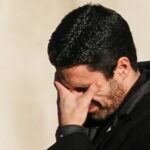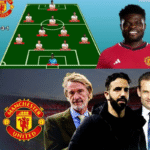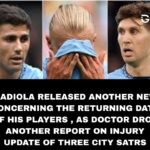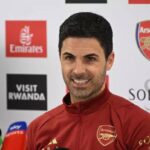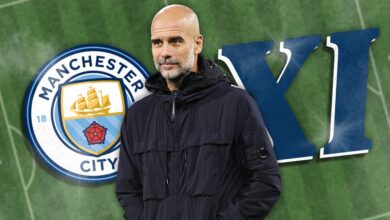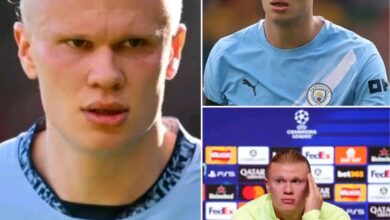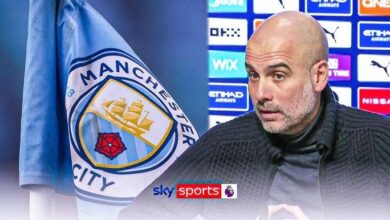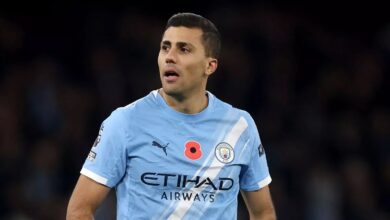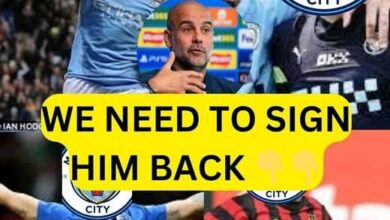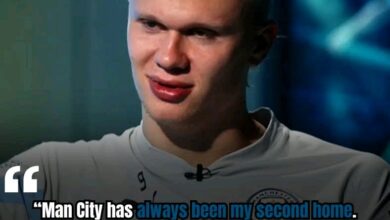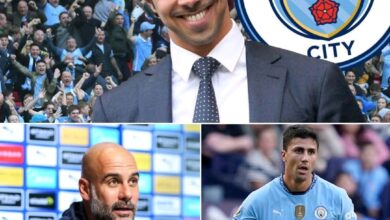Arsenal Injury Update: Gabriel Magalhaes and Reiss Nelson Return to Training
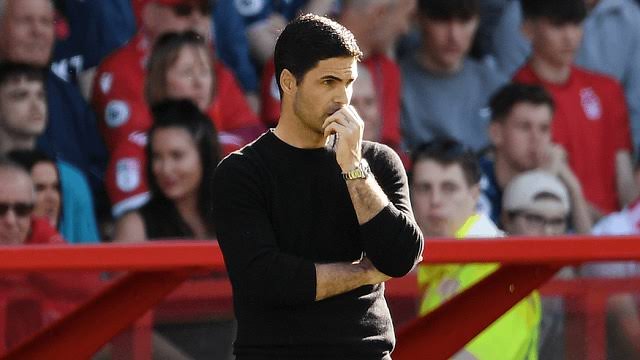
Arsenal’s pre-season training camp in Spain has brought some much-needed positive news for fans and coaching staff alike. Two key players who spent significant portions of the previous campaign on the sidelines have taken important steps in their recovery journeys. Gabriel Magalhaes, the Brazilian center-back who has become a cornerstone of Arsenal’s defense, and Reiss Nelson, the versatile winger seeking to establish himself in the first team, have both returned to training with the ball at their feet.
This sight of both players participating in ball work during Thursday’s training session represents a significant milestone in their respective recoveries. For a club that has often struggled with injury management in recent years, having key players return to fitness during pre-season rather than rushing back mid-campaign is a welcome development that could prove crucial for the upcoming season
Gabriel Magalhaes has established himself as one of Arsenal’s most reliable defenders since his arrival from Lille. His presence in the heart of the defense has been instrumental in the club’s recent resurgence under Mikel Arteta. The Brazilian’s ability to read the game, his aerial dominance, and his composure on the ball have made him an indispensable part of Arsenal’s defensive structure.
The defender’s injury occurred on April 1st, a date that proved to be anything but a cruel joke for Arsenal fans. A hamstring injury sustained during a crucial period of the season required surgical intervention, effectively ending his campaign prematurely. The timing couldn’t have been worse, as Arsenal were in the midst of a challenging run of fixtures that would ultimately define their season
Hamstring injuries, particularly those requiring surgery, are notoriously tricky to manage. The muscle group is essential for explosive movements, quick changes of direction, and the kind of high-intensity running that modern football demands. For a center-back like Gabriel, who often needs to track back at pace or engage in aerial duels after sprinting, the integrity of the hamstring is crucial.
The surgical procedure Gabriel underwent is typically reserved for more severe hamstring tears where conservative treatment is unlikely to provide a full recovery. The decision to operate indicates the severity of the injury and the long-term thinking behind Arsenal’s medical team’s approach. Rather than risk a partial recovery that could lead to recurring problems, the club opted for the more definitive surgical solution
The recovery timeline of approximately three months aligns with what we’ve seen from similar cases within the Arsenal squad. Both Bukayo Saka and Kai Havertz underwent similar procedures and required roughly the same recovery period. This consistency suggests that Arsenal’s medical team has developed a systematic approach to managing these injuries, learning from previous experiences to optimize recovery protocols.
Gabriel’s return to training with the ball represents a significant psychological boost as much as a physical one. The mental aspect of recovery from major injuries cannot be understated. For a player who has been accustomed to regular game time and the intensity of professional football, the period of rehabilitation can be mentally challenging. The ability to once again feel the ball at his feet and participate in team training sessions marks a return to normalcy.
His Instagram post, “Happy to be back. Let’s go!!” captures the enthusiasm and determination that has characterized his time at Arsenal. The exclamation marks and positive tone suggest a player eager to contribute once again to the team’s objectives.
Reiss Nelson’s situation presents a different but equally compelling narrative. The English winger has been on a journey of development that has taken him from the Arsenal academy through various loan spells and back to his boyhood club. His injury occurred while on loan at Fulham, adding another layer of complexity to his recovery and career trajectory.
Nelson’s hamstring injury also required surgical intervention, and with five months having passed since the operation, he appears to be further along in his recovery than Gabriel. However, the extended timeline also reflects the cautious approach Arsenal’s medical team has taken with the winger, particularly given his history of injury setbacks.
The mention of “previous setbacks” in Nelson’s injury history highlights one of the challenges facing modern footballers. Recurring injuries can become a vicious cycle, where the fear of re-injury affects performance and confidence, potentially leading to compensation patterns that increase the risk of other injuries. Arsenal’s careful management of Nelson’s return suggests they are acutely aware of this risk.
Nelson’s situation is particularly interesting from a career perspective. At a crucial age where he needs regular game time to develop, extended injury layoffs can be particularly damaging. The loan spell at Fulham was intended to provide him with the consistent playing time he needed to develop his game. The injury disrupted this plan, but his return to training with Arsenal offers a fresh opportunity to impress during pre-season.
The fact that Nelson is training with the ball suggests he has progressed beyond the initial stages of rehabilitation. Early recovery from hamstring surgery typically involves a gradual progression from rest to walking, jogging, and eventually running. The ability to work with the ball indicates that he has regained confidence in the injured muscle and can perform the kind of movements required in football.
Arsenal’s approach to injury management has evolved significantly under Mikel Arteta and the current medical team. The club has invested heavily in sports science, recovery facilities, and medical expertise. The systematic approach to Gabriel and Nelson’s recoveries reflects this investment and the lessons learned from previous injury crise
The decision to allow both players to participate in the pre-season tour in Spain, rather than continuing their rehabilitation at the club’s London Colney training ground, indicates confidence in their recovery progress. Pre-season tours are typically reserved for players who are close to full fitness or those who can benefit from the team environment without risking setbacks.
The Spanish training camp provides an ideal environment for players returning from injury. The controlled conditions, reduced external pressures, and intensive training schedule allow for careful monitoring of players’ responses to increased workload. The medical team can closely observe how Gabriel and Nelson cope with the demands of training while gradually increasing their involvement.
Gabriel’s return to fitness has significant tactical implications for Arsenal. His partnership with William Saliba has been one of the defensive success stories of recent seasons. The Brazilian’s left-footed distribution complements Saliba’s right-footed passing, providing balance and options for building play from the back.
Gabriel’s aerial ability is particularly valuable in defending set pieces, an area where Arsenal has shown improvement but still faces challenges against physical opponents. His presence in the box for both defensive and offensive set pieces adds a dimension that has been missing during his absence.
The defender’s leadership qualities have also been evident during his time at Arsenal. His vocal presence and organizational skills help coordinate the defensive line, particularly important when playing alongside younger defenders or during rotation periods.
Nelson’s return presents different tactical opportunities. His pace and direct running style offer an alternative to Arsenal’s sometimes patient build-up play. The winger’s ability to beat defenders one-on-one and create chances from wide positions could provide valuable options for Arteta’s tactical system.
The depth that Nelson’s return provides is equally important. Modern football’s demands mean that squad rotation is essential, and having a fit Nelson available gives Arsenal more flexibility in their team selection, particularly during busy periods or when managing other players’ workloads.
The psychological aspect of injury recovery cannot be overlooked. For professional athletes, identity and self-worth are often closely tied to their ability to perform. Extended periods away from the game can be mentally challenging, requiring as much attention as the physical rehabilitation.
Gabriel’s positive social media post suggests he has maintained his mental strength throughout the recovery process. The defender’s personality and leadership qualities have been evident since his arrival at Arsenal, and his apparent eagerness to return to action bodes well for his reintegration into the squad.
Nelson’s situation may be more complex given his career stage and the disruption to his development. However, the fact that he has been included in the pre-season tour suggests that both he and the club remain optimistic about his prospects.
While both players are training with the ball, their readiness for competitive action remains to be determined. Pre-season provides the perfect opportunity to gradually increase their involvement, from training sessions to friendly matches, allowing the medical team to assess their responses to different intensities and durations of activity.
The progression from ball work to contact training to match situations is carefully managed to minimize the risk of setbacks. Arsenal’s medical team will be monitoring various indicators, from physical markers like muscle function and endurance to psychological factors like confidence and decision-making under pressure.
Gabriel’s experience and established role in the team may allow for a quicker integration into match action. His understanding of Arsenal’s tactical system and his partnerships with other defenders could facilitate a smoother transition back to competitive football.
Nelson’s path back to match fitness may require more careful consideration. His need to readjust to Arsenal’s training methods after his loan spell, combined with the careful management of his injury history, suggests a more gradual approach may be adopted.
The return of both Gabriel and Nelson significantly strengthens Arsenal’s squad depth for the upcoming season. In Gabriel’s case, his availability ensures that Arsenal have their preferred center-back partnership available from the start of the campaign, rather than having to rely on makeshift solutions or rush his return.
Nelson’s recovery adds another option to Arsenal’s attacking ranks. While his immediate role may be as a squad player, his development and the increased competition for places can only benefit the team’s overall performance levels. The successful management of these injuries also sends a positive message about Arsenal’s medical capabilities. In an era where player welfare and injury prevention are increasingly important, demonstrating competence in these areas helps attract and retain talent.
The return of Gabriel Magalhaes and Reiss Nelson to training with the ball represents more than just two players recovering from injury. It demonstrates Arsenal’s improved approach to player welfare, their investment in medical expertise, and their careful planning for the future. Gabriel’s recovery ensures that Arsenal’s defensive foundation remains strong, while Nelson’s return provides additional attacking options and depth. Both players’ journeys back to fitness have been carefully managed, prioritizing long-term health over short-term availability.
As Arsenal prepare for another challenging season, having these players available from the start provides the kind of stability and depth that can make the difference between success and disappointment. The positive signs from Spain suggest that both players are on track for successful returns, potentially playing crucial roles in Arsenal’s upcoming campaign. The careful management of these recoveries also reflects the broader changes at Arsenal under Arteta’s leadership. The systematic approach to player development, injury prevention, and rehabilitation demonstrates a club that has learned from past mistakes and is building for sustained success.
With Gabriel and Nelson back in training, Arsenal fans can look forward to the upcoming season with increased optimism. The return of these key players, combined with the club’s continued investment in squad development, suggests that Arsenal are well-positioned to compete at the highest level once again.
